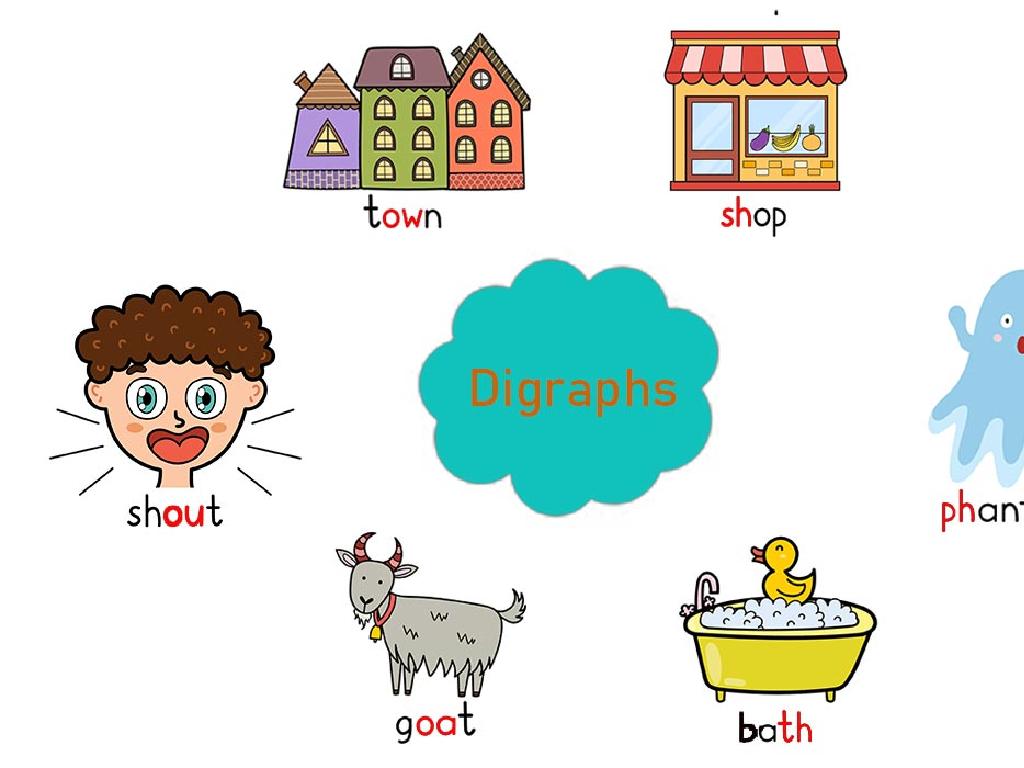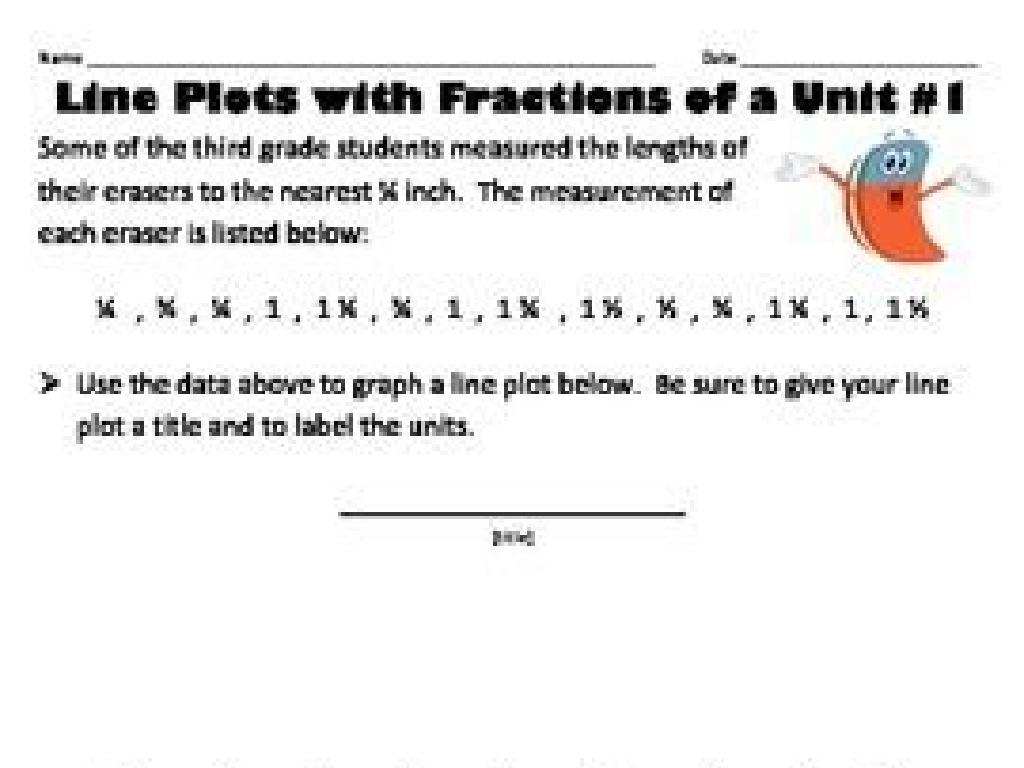Evaluate Powers
Subject: Math
Grade: Seventh grade
Topic: Exponents
Please LOG IN to download the presentation. Access is available to registered users only.
View More Content
Welcome to Exponents!
– Understanding the power of powers
– Powers represent repeated multiplication
– Defining exponents and their use
– Exponents show how many times to multiply a number by itself
– Real-life examples of exponents
– Area calculations, scientific notation, and population growth
– Applying exponents in calculations
– Use exponents to simplify and solve math problems
|
This slide introduces the concept of exponents, which are a shorthand way to express repeated multiplication. It’s important for students to grasp that an exponent indicates how many times a base number is multiplied by itself. Highlight the utility of exponents in various real-life scenarios, such as calculating the area of squares, understanding large numbers in scientific notation, or predicting population growth. Encourage students to think of exponents as a tool that makes complex multiplication easier and more efficient. Provide examples where exponents simplify calculations and make math problems more manageable. This foundational understanding will set the stage for more advanced mathematical concepts involving powers.
Understanding the Power of Exponents
– Define a power in math
– A power represents repeated multiplication of a number
– Components: Base and Exponent
– Base: number being multiplied; Exponent: how many times
– Structure: Base^Exponent
– For example, 3^2 means 3 multiplied by itself twice
– Simple power examples
– Evaluate 2^3=8, 5^2=25, 1^7=1 to see the pattern
|
This slide introduces the concept of powers in mathematics, which is a fundamental part of understanding exponents. Begin by defining a power as a way to express repeated multiplication of the same number. Clarify the terms ‘base’ and ‘exponent’ where the base is the number being multiplied, and the exponent denotes how many times the base is used as a factor. Illustrate the structure of a power with the notation Base^Exponent. Provide simple examples such as 2^3, 5^2, and 1^7 to show how powers are evaluated and to help students recognize patterns in powers. Encourage students to work out these examples themselves to reinforce the concept.
Evaluating Powers with Exponents
– Calculating powers via multiplication
– Powers represent repeated multiplication of the same number
– Example: Evaluating 3 raised to 4
– 3^4 means 3 multiplied by itself 4 times: 3 x 3 x 3 x 3
– Class activity: Calculate 2 to the power of 5
– We’ll work together to find the value of 2^5
|
This slide introduces the concept of evaluating powers, which is a fundamental aspect of understanding exponents. Start by explaining that powers are a shorthand for repeated multiplication. Use the example of 3^4 to show that it means multiplying 3 by itself four times. Then, engage the class in a collaborative activity to calculate 2^5, guiding them through the process step by step. Encourage students to participate and ask questions to ensure comprehension. After the activity, discuss the result and how understanding powers can simplify mathematical expressions.
Properties of Exponents
– Multiplying with same base
– Multiply exponents: a^m * a^n = a^(m+n)
– Dividing with same base
– Divide exponents: a^m / a^n = a^(m-n)
– Understanding powers of a power
– (a^m)^n = a^(m*n), multiplying the exponents
– Applying exponent rules
|
This slide introduces the fundamental properties of exponents that are crucial for understanding how to evaluate powers. When multiplying powers with the same base, we add the exponents. For dividing powers with the same base, we subtract the exponents. Powers of a power involve multiplying the exponents. It’s essential to provide examples for each property to ensure comprehension. For instance, demonstrate 2^3 * 2^2 = 2^(3+2) = 2^5 for multiplication, and 2^5 / 2^2 = 2^(5-2) = 2^3 for division. For powers of a power, show (3^2)^3 = 3^(2*3) = 3^6. Encourage students to practice these rules with different bases and exponents to solidify their understanding.
Zero and Negative Exponents
– Any number to the power of zero
– Equals one (e.g., 5^0 = 1, a^0 = 1 for any a)
– Negative exponents and reciprocals
– Means 1 divided by the base to the positive exponent (e.g., 2^-3 = 1/2^3)
– Example: Calculating 4^0
– 4 raised to the power of zero is 1 (4^0 = 1)
– Example: Calculating 2^-3
– 2 raised to the power of -3 is 1/8 (2^-3 = 1/2^3 = 1/8)
|
This slide introduces students to the concepts of zero and negative exponents. Begin by explaining that any non-zero number raised to the power of zero equals one. This is a fundamental rule in exponents and can be a source of confusion, so ensure students understand through several examples. Next, discuss negative exponents and how they represent the reciprocal of the base raised to the corresponding positive exponent. Provide clear examples like 4^0 and 2^-3 to illustrate these concepts. Encourage students to work out these examples on their own to solidify their understanding. The goal is for students to leave the class comfortable with evaluating powers that have zero and negative exponents.
Class Activity: Exponent Challenge
– Pair up and solve problems
– Share solutions with the class
– Discuss solving strategies
– Talk about different methods used
– Reflect on learning outcomes
– Think about what was learned and any difficulties faced
|
This activity is designed to promote collaborative learning and peer teaching. Students will pair up to work on a set of exponent problems, encouraging them to communicate and solve problems together. After solving, they will present their solutions to the class, fostering a sense of community and shared learning. Following the presentations, lead a group discussion to explore the various strategies used by students, highlighting the benefits of different approaches. Conclude with a reflection session where students can discuss what they’ve learned and any challenges they encountered. This will help them to consolidate their understanding and recognize areas that may need further explanation. Possible activities could include: creating exponent flashcards, solving exponent puzzles, or even a friendly ‘exponent bingo’ game to make learning fun and engaging.
Homework: Mastering Exponents
– Finish the Exponent Worksheet
– Apply exponents in real-world scenarios
– For example, calculate the area of a square plot with side length 2^3 meters
– Preview scientific notation
– Scientific notation expresses large numbers, e.g., 2^10 as 1.024 x 10^3
– Review and practice for mastery
|
This homework is designed to reinforce today’s lesson on evaluating powers and prepare students for the upcoming topic of scientific notation. The worksheet provides structured practice on calculating powers, while the real-world scenarios help students understand the practical applications of exponents. Encourage students to think about how exponents are used in areas such as computing and science. Introducing scientific notation will pave the way for dealing with very large or small numbers efficiently. Ensure students understand the importance of reviewing the material and practicing further to achieve a solid understanding of exponents.






